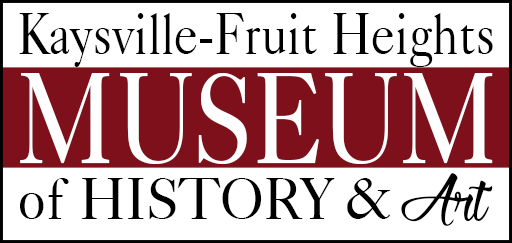Youth Community Builders
PRESERVING THE PAST FOR THE FUTURE
Children and Teens Who Helped Build Communities
When we hear the stories of earlier generations who have gone through difficult times but have managed to emerge strong, we learn that resilience is possible. We can learn from others to be strong ourselves. When we know about their struggles, their hard work, and their ability to serve others while experiencing trials, we can practice these characteristics ourselves and feel hope. Gratitude for their example helps us to be better. That gratitude circle can grow wider.
Even if you are not an eighth-generation citizen with ancestors who founded Kaysville and Fruit Heights, we can appreciate what others did to build the cities we now enjoy. That sense of historical place that comes with living here can give us hope and pride as well as a desire to continue to improve the future.
TURN OF THE CENTURY
The children who were born in the late 1800s and early 1900s when the country was moving into a new century grew up during great progress. Those that were born in Kaysville after 1869 or who traveled across the plains by train weren’t considered pioneers properly, but they did help to build a new community. Many of the activities in which they participated were considered pioneering achievements because their communities were new. They ran for government office, organized service groups and clubs, hand-built infrastructure, and volunteered in church and civic programs.
CREATING TOWNS AND CITIES
The Roaring Twenties, two world wars, the introduction of big bands, and rock ‘n’ roll music were some of the events taking place when the children of this era were growing up. Many technological advancements occurred so that these young people rode both in wagons and on the electric Bamberger train. Television, drive-in fast-food stores, and microwaves were all newly invented conveniences. The teachers, coaches, and leaders who guided the youth were later replaced by the youth themselves who learned how to pay back generously.
Stories of Young Community Builders
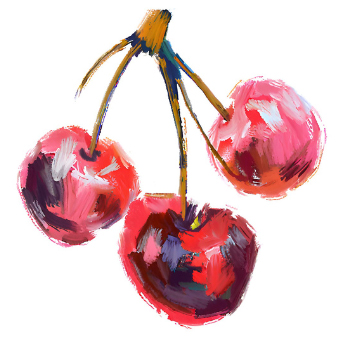
Samuel Grandison Raymond
1907 – 1991
When Sam was a boy, he helped to haul hay and pick cherries on the family farm that was on the east benchland. He always had to be on the lookout for rattlesnakes. A one room brick building that had been built on Mountain Road in about 1890 was where he went to school. When he grew up, he became a church leader, a fruit farmer, a bus driver, and the first town board president in Fruit Heights.
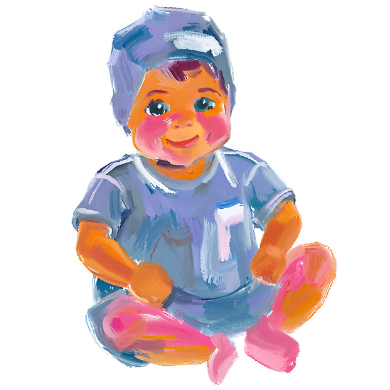
Katherine Harvey
1939 – Present
Fruit Heights didn’t exist when Katherine’s mother was waiting for her to be born. The people in east Kaysville needed to form a town because they needed better water resources. There weren’t enough people living on Mountain Road, though, to make a town until she was born adding up to the total needed. She was the 100th person to reside in the area. When she became a teenager, she worked as a car hop at a drive-in called the Rich Inn.
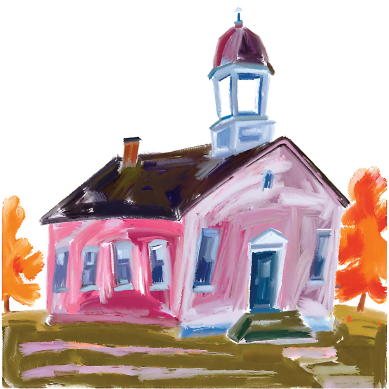
Florence Mabel Barnett
1890 – 1972
Florence wrote down her memories of early school days. She recalled clearly that the larger boys got rough on the playground and scared the little kids. They were afraid they would be trampled by “wild stampedes” around the school square. She had seen the antics of these big boys and clung tightly to her big sister’s hand as they walked to school that first day. She soon found out that five years old was too young to enroll and was sent home.
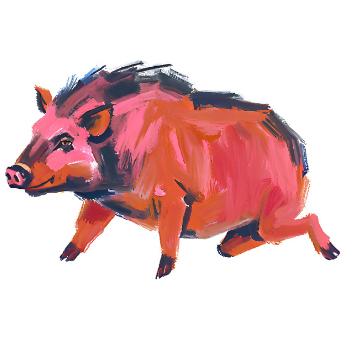
John Forest Barker
1929 – 2018
Outhouses were still in common use when Forest was a little boy. It was not unusual for stray farm animals to wander the streets either. Once when he was about five, a huge boar escaped from a neighboring farm and blocked him from escaping the outhouse. Calling and calling for help, his mother finally heard him and scared off the big pig. As an adult, he received the Unsung Hero Award for Kaysville and Fruit Heights.

Henry Hooper Blood and Minnie Ann Barnes
1872 – 1942 & 1872 – 1947
Henry Blood and Minnie Barnes were best friends as children. They played together, went to school together and married when they grew up. When a beautiful church was built just west of Main Street, he wrote for the dedication a history of Kaysville in which he told about the trappers’ huts that his pioneer grandfather found when the family first arrived. Henry became governor of the state and Minnie the first lady of Utah.
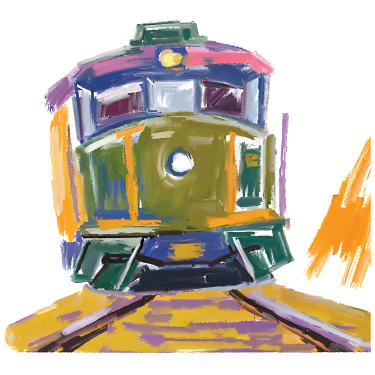
Olive Bertha Clark
1899 – 1983
Bertha’s parents were pioneers from England who settled in Kaysville. Her father built a two room home south of town, but the home had to be moved for the Bamberger Railroad tracks to be laid. She remembered the long line of white top buggies drawn by horses that lined up for his funeral procession. Another strong memory was a terrible east wind in the fall of 1906 that blew her little sister down through the fields before she was rescued.
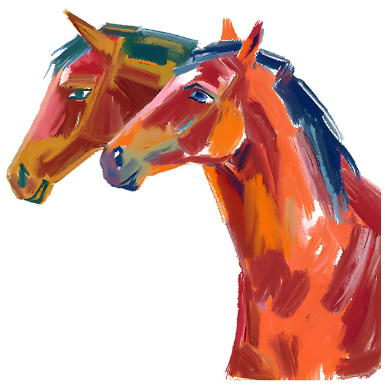
Reva Loreene Sheffield
1905 – 2004
Hiking, fishing, and hunting were the favorite sports of older youth in the 1920s. Both boys and girls liked to ride horses and walk to the creeks and up the hillsides nearby. The Kaysville Klever Klique was a group of Reva’s girlfriends who gathered to make up fun activities. They were pals for many years and graduated from Davis High School together.
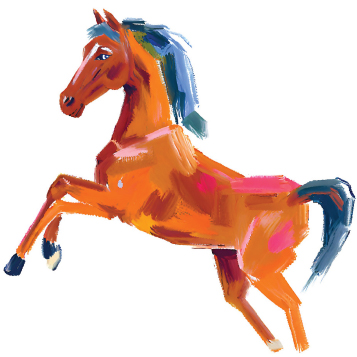
BenOrlo Harvey Brough
1926 – 2012
Ben and his friends Max and Kent loved horses and grew up around other farm animals. When they went to Davis High School, boxing and rodeo were two favorite sports. This group of young men decided to compete in the rodeos held on the fairgrounds east of the school. The rodeo arena was just east of their school. Bronc and Bull riding were dangerous but exciting adventures.
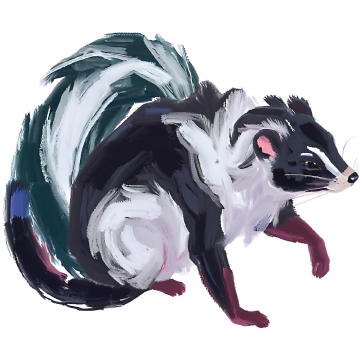
Clarence Udell Green
1929 – 2004
How to trap muskrats is something Udell learned from his father. These animals looked something like small beaver or mink, lived along creek banks and had silky fur. He and his friends would take the pelts to Salt Lake City while riding on the Bamberger train to be sold. Once they snuck a skunk pelt onto the train because it was stinky. The conductor caught a wiff or scent and kicked them off the train. That didn’t stop them from trapping, but the stuck to muskrat fur after that.
Samuel Grandison Raymond
1907 – 1991
 When Sam was a boy, he helped to haul hay and pick cherries on the family farm that was on the east benchland. He always had to be on the lookout for rattlesnakes. A one-room brick building that had been built on Mountain Road in about 1890 was where he went to school. When he grew up, he became a church leader, a fruit farmer, a bus driver, and the first town board president in Fruit Heights.
When Sam was a boy, he helped to haul hay and pick cherries on the family farm that was on the east benchland. He always had to be on the lookout for rattlesnakes. A one-room brick building that had been built on Mountain Road in about 1890 was where he went to school. When he grew up, he became a church leader, a fruit farmer, a bus driver, and the first town board president in Fruit Heights.
Katherine Harvey
1939 – Present
 Fruit Heights didn’t exist when Katherine’s mother was waiting for her to be born. The people in east Kaysville needed to form a town because they needed better water resources. There weren’t enough people living on Mountain Road, though, to make a town until she was born adding up to the total needed. She was the 100th person to reside in the area. When she became a teenager, she worked as a car hop at a drive-in called the Rich Inn.
Fruit Heights didn’t exist when Katherine’s mother was waiting for her to be born. The people in east Kaysville needed to form a town because they needed better water resources. There weren’t enough people living on Mountain Road, though, to make a town until she was born adding up to the total needed. She was the 100th person to reside in the area. When she became a teenager, she worked as a car hop at a drive-in called the Rich Inn.
Florence Mabel Barnett
1890 – 1972
 Florence wrote down her memories of early school days. She recalled clearly that the larger boys got rough on the playground and scared the little kids. They were afraid they would be trampled by “wild stampedes” around the school square. She had seen the antics of these big boys and clung tightly to her big sister’s hand as they walked to school that first day. She soon found out that five years old was too young to enroll and was sent home.
Florence wrote down her memories of early school days. She recalled clearly that the larger boys got rough on the playground and scared the little kids. They were afraid they would be trampled by “wild stampedes” around the school square. She had seen the antics of these big boys and clung tightly to her big sister’s hand as they walked to school that first day. She soon found out that five years old was too young to enroll and was sent home.
John Forest Barker
1929 – 2018
 Outhouses were still in common use when Forest was a little boy. It was not unusual for stray farm animals to wander the streets either. Once when he was about five, a huge boar escaped from a neighboring farm and blocked him from escaping the outhouse. Calling and calling for help, his mother finally heard him and scared off the big pig. As an adult, he received the Unsung Hero Award for Kaysville and Fruit Heights.
Outhouses were still in common use when Forest was a little boy. It was not unusual for stray farm animals to wander the streets either. Once when he was about five, a huge boar escaped from a neighboring farm and blocked him from escaping the outhouse. Calling and calling for help, his mother finally heard him and scared off the big pig. As an adult, he received the Unsung Hero Award for Kaysville and Fruit Heights.
Henry Hooper Blood and Minnie Ann Barnes
1872 – 1942 & 1872 – 1947
 Henry Blood and Minnie Barnes were best friends as children. They played together, went to school together and married when they grew up. When a beautiful church was built just west of Main Street, he wrote for the dedication a history of Kaysville in which he told about the trappers’ huts that his pioneer grandfather found when the family first arrived. Henry became governor of the state and Minnie the first lady of Utah.
Henry Blood and Minnie Barnes were best friends as children. They played together, went to school together and married when they grew up. When a beautiful church was built just west of Main Street, he wrote for the dedication a history of Kaysville in which he told about the trappers’ huts that his pioneer grandfather found when the family first arrived. Henry became governor of the state and Minnie the first lady of Utah.
Olive Bertha Clark
1899 – 1983
 Bertha’s parents were pioneers from England who settled in Kaysville. Her father built a two room home south of town, but the home had to be moved for the Bamberger Railroad tracks to be laid. She remembered the long line of white top buggies drawn by horses that lined up for his funeral procession. Another strong memory was a terrible east wind in the fall of 1906 that blew her little sister down through the fields before she was rescued.
Bertha’s parents were pioneers from England who settled in Kaysville. Her father built a two room home south of town, but the home had to be moved for the Bamberger Railroad tracks to be laid. She remembered the long line of white top buggies drawn by horses that lined up for his funeral procession. Another strong memory was a terrible east wind in the fall of 1906 that blew her little sister down through the fields before she was rescued.
Reva Loreene Sheffield
1905 – 2004
 Hiking, fishing, and hunting were the favorite sports of older youth in the 1920s. Both boys and girls liked to ride horses and walk to the creeks and up the hillsides nearby. The Kaysville Klever Klique was a group of Reva’s girlfriends who gathered to make up fun activities. They were pals for many years and graduated from Davis High School together.
Hiking, fishing, and hunting were the favorite sports of older youth in the 1920s. Both boys and girls liked to ride horses and walk to the creeks and up the hillsides nearby. The Kaysville Klever Klique was a group of Reva’s girlfriends who gathered to make up fun activities. They were pals for many years and graduated from Davis High School together.
BenOrlo Harvey Brough
1926 – 2012
 Ben and his friends Max and Kent loved horses and grew up around other farm animals. When they went to Davis High School, boxing and rodeo were two favorite sports. This group of young men decided to compete in the rodeos held on the fairgrounds east of the school. The rodeo arena was just east of their school. Bronc and Bull riding were dangerous but exciting adventures.
Ben and his friends Max and Kent loved horses and grew up around other farm animals. When they went to Davis High School, boxing and rodeo were two favorite sports. This group of young men decided to compete in the rodeos held on the fairgrounds east of the school. The rodeo arena was just east of their school. Bronc and Bull riding were dangerous but exciting adventures.
Clarence Udell Green
1929 – 2004
 How to trap muskrats is something Udell learned from his father. These animals looked something like small beaver or mink, lived along creek banks and had silky fur. He and his friends would take the pelts to Salt Lake City while riding on the Bamberger train to be sold. Once they snuck a skunk pelt onto the train because it was stinky. The conductor caught a wiff or scent and kicked them off the train. That didn’t stop them from trapping, but the stuck to muskrat fur after that.
How to trap muskrats is something Udell learned from his father. These animals looked something like small beaver or mink, lived along creek banks and had silky fur. He and his friends would take the pelts to Salt Lake City while riding on the Bamberger train to be sold. Once they snuck a skunk pelt onto the train because it was stinky. The conductor caught a wiff or scent and kicked them off the train. That didn’t stop them from trapping, but the stuck to muskrat fur after that.
Samuel Grandison Raymond
1907 – 1991
 When Sam was a boy, he helped to haul hay and pick cherries on the family farm that was on the east benchland. He always had to be on the lookout for rattlesnakes. A one-room brick building that had been built on Mountain Road in about 1890 was where he went to school. When he grew up, he became a church leader, a fruit farmer, a bus driver, and the first town board president in Fruit Heights.
When Sam was a boy, he helped to haul hay and pick cherries on the family farm that was on the east benchland. He always had to be on the lookout for rattlesnakes. A one-room brick building that had been built on Mountain Road in about 1890 was where he went to school. When he grew up, he became a church leader, a fruit farmer, a bus driver, and the first town board president in Fruit Heights.
Katherine Harvey
1939 – Present
 Fruit Heights didn’t exist when Katherine’s mother was waiting for her to be born. The people in east Kaysville needed to form a town because they needed better water resources. There weren’t enough people living on Mountain Road, though, to make a town until she was born adding up to the total needed. She was the 100th person to reside in the area. When she became a teenager, she worked as a car hop at a drive-in called the Rich Inn.
Fruit Heights didn’t exist when Katherine’s mother was waiting for her to be born. The people in east Kaysville needed to form a town because they needed better water resources. There weren’t enough people living on Mountain Road, though, to make a town until she was born adding up to the total needed. She was the 100th person to reside in the area. When she became a teenager, she worked as a car hop at a drive-in called the Rich Inn.
Florence Mabel Barnett
 Florence wrote down her memories of early school days. She recalled clearly that the larger boys got rough on the playground and scared the little kids. They were afraid they would be trampled by “wild stampedes” around the school square. She had seen the antics of these big boys and clung tightly to her big sister’s hand as they walked to school that first day. She soon found out that five years old was too young to enroll and was sent home.
Florence wrote down her memories of early school days. She recalled clearly that the larger boys got rough on the playground and scared the little kids. They were afraid they would be trampled by “wild stampedes” around the school square. She had seen the antics of these big boys and clung tightly to her big sister’s hand as they walked to school that first day. She soon found out that five years old was too young to enroll and was sent home.
John Forest Barker
1929 – 2018
 Outhouses were still in common use when Forest was a little boy. It was not unusual for stray farm animals to wander the streets either. Once when he was about five, a huge boar escaped from a neighboring farm and blocked him from escaping the outhouse. Calling and calling for help, his mother finally heard him and scared off the big pig. As an adult, he received the Unsung Hero Award for Kaysville and Fruit Heights.
Outhouses were still in common use when Forest was a little boy. It was not unusual for stray farm animals to wander the streets either. Once when he was about five, a huge boar escaped from a neighboring farm and blocked him from escaping the outhouse. Calling and calling for help, his mother finally heard him and scared off the big pig. As an adult, he received the Unsung Hero Award for Kaysville and Fruit Heights.
Henry Hooper Blood and Minnie Ann Barnes
1872 – 1942 & 1872 – 1947
 Henry Blood and Minnie Barnes were best friends as children. They played together, went to school together and married when they grew up. When a beautiful church was built just west of Main Street, he wrote for the dedication a history of Kaysville in which he told about the trappers’ huts that his pioneer grandfather found when the family first arrived. Henry became governor of the state and Minnie the first lady of Utah.
Henry Blood and Minnie Barnes were best friends as children. They played together, went to school together and married when they grew up. When a beautiful church was built just west of Main Street, he wrote for the dedication a history of Kaysville in which he told about the trappers’ huts that his pioneer grandfather found when the family first arrived. Henry became governor of the state and Minnie the first lady of Utah.
Olive Bertha Clark
1899 – 1983
 Bertha’s parents were pioneers from England who settled in Kaysville. Her father built a two room home south of town, but the home had to be moved for the Bamberger Railroad tracks to be laid. She remembered the long line of white top buggies drawn by horses that lined up for his funeral procession. Another strong memory was a terrible east wind in the fall of 1906 that blew her little sister down through the fields before she was rescued.
Bertha’s parents were pioneers from England who settled in Kaysville. Her father built a two room home south of town, but the home had to be moved for the Bamberger Railroad tracks to be laid. She remembered the long line of white top buggies drawn by horses that lined up for his funeral procession. Another strong memory was a terrible east wind in the fall of 1906 that blew her little sister down through the fields before she was rescued.
Reva Loreene Sheffield
1905 – 2004
 Hiking, fishing, and hunting were the favorite sports of older youth in the 1920s. Both boys and girls liked to ride horses and walk to the creeks and up the hillsides nearby. The Kaysville Klever Klique was a group of Reva’s girlfriends who gathered to make up fun activities. They were pals for many years and graduated from Davis High School together.
Hiking, fishing, and hunting were the favorite sports of older youth in the 1920s. Both boys and girls liked to ride horses and walk to the creeks and up the hillsides nearby. The Kaysville Klever Klique was a group of Reva’s girlfriends who gathered to make up fun activities. They were pals for many years and graduated from Davis High School together.
BenOrlo Harvey Brough
 Ben and his friends Max and Kent loved horses and grew up around other farm animals. When they went to Davis High School, boxing and rodeo were two favorite sports. This group of young men decided to compete in the rodeos held on the fairgrounds east of the school. The rodeo arena was just east of their school. Bronc and Bull riding were dangerous but exciting adventures.
Ben and his friends Max and Kent loved horses and grew up around other farm animals. When they went to Davis High School, boxing and rodeo were two favorite sports. This group of young men decided to compete in the rodeos held on the fairgrounds east of the school. The rodeo arena was just east of their school. Bronc and Bull riding were dangerous but exciting adventures.
Clarence Udell Green
1929 – 2004
 How to trap muskrats is something Udell learned from his father. These animals looked something like small beaver or mink, lived along creek banks and had silky fur. He and his friends would take the pelts to Salt Lake City while riding on the Bamberger train to be sold. Once they snuck a skunk pelt onto the train because it was stinky. The conductor caught a wiff or scent and kicked them off the train. That didn’t stop them from trapping, but the stuck to muskrat fur after that.
How to trap muskrats is something Udell learned from his father. These animals looked something like small beaver or mink, lived along creek banks and had silky fur. He and his friends would take the pelts to Salt Lake City while riding on the Bamberger train to be sold. Once they snuck a skunk pelt onto the train because it was stinky. The conductor caught a wiff or scent and kicked them off the train. That didn’t stop them from trapping, but the stuck to muskrat fur after that.
Sources
- Individual autobiographies and histories accessed on FamilySearch, Utah State Archives and found in the KFH Museum library.
Notes
New resources are discovered often that add to local history. Others we have heard but have forgotten. KFH Museum welcomes stories of the children and young adults that give glimpses into their lives. Email to ourkaysvillestory@gmail.com so we can share them.
Graphics created by students at the Davis Catalyst Center, Kayla Adams and team, under the direction of graphics design instructor, Eric Scholer. 
